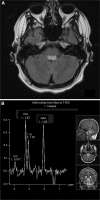The genetics of Leigh syndrome and its implications for clinical practice and risk management
- PMID: 25419155
- PMCID: PMC4235479
- DOI: 10.2147/TACG.S46176
The genetics of Leigh syndrome and its implications for clinical practice and risk management
Abstract
Leigh syndrome, also referred to as subacute necrotizing encephalomyelopathy, is a severe, early-onset neurodegenerative disorder that is relentlessly progressive and devastating to both the patient and the patient's family. Attributed to the ultimate failure of the mitochondrial respiratory chain, once it starts, the disease often results in the regression of both mental and motor skills, leading to disability and rapid progression to death. It is a mitochondrial disorder with both phenotypic and genetic heterogeneity. The cause of death is most often respiratory failure, but there are a whole host of complications, including refractory seizures, that may further complicate morbidity and mortality. The symptoms may develop slowly or with rapid progression, usually associated with age of onset. Although the disease is usually diagnosed within the first year of life, it is important to note that recent studies reveal phenotypic heterogeneity, with some patients having evidence of in utero presentation and others having adult-onset symptoms.
Keywords: mitochondrial DNA; mitochondrial disorder; multisystemic disease; neurodegeneration; neuroimaging; oxidative phosphorylation; seizures.
Figures


References
-
- Genetics Home Reference. Leigh syndrome. 2011. [Accessed: Jun 2014]. Available from: http://ghr.nlm.nih.gov/condition/leigh-syndrome.
-
- Carrozzo R, Dionisi-Vici C, Steuerwald U, et al. SUCLA2 mutations are associated with mild methylmalonic aciduria, Leigh-like encephalomyopathy, dystonia and deafness. Brain. 2007;130(Pt 3):862–874. - PubMed
-
- Darin N, Oldfors A, Moslemi AR, Holme E, Tulinius M. The incidence of mitochondrial encephalomyopathies in childhood: clinical features and morphological, biochemical, and DNA anbormalities. Ann Neurol. 2001;49(3):377–383. - PubMed
Publication types
Grants and funding
LinkOut - more resources
Full Text Sources
Other Literature Sources

